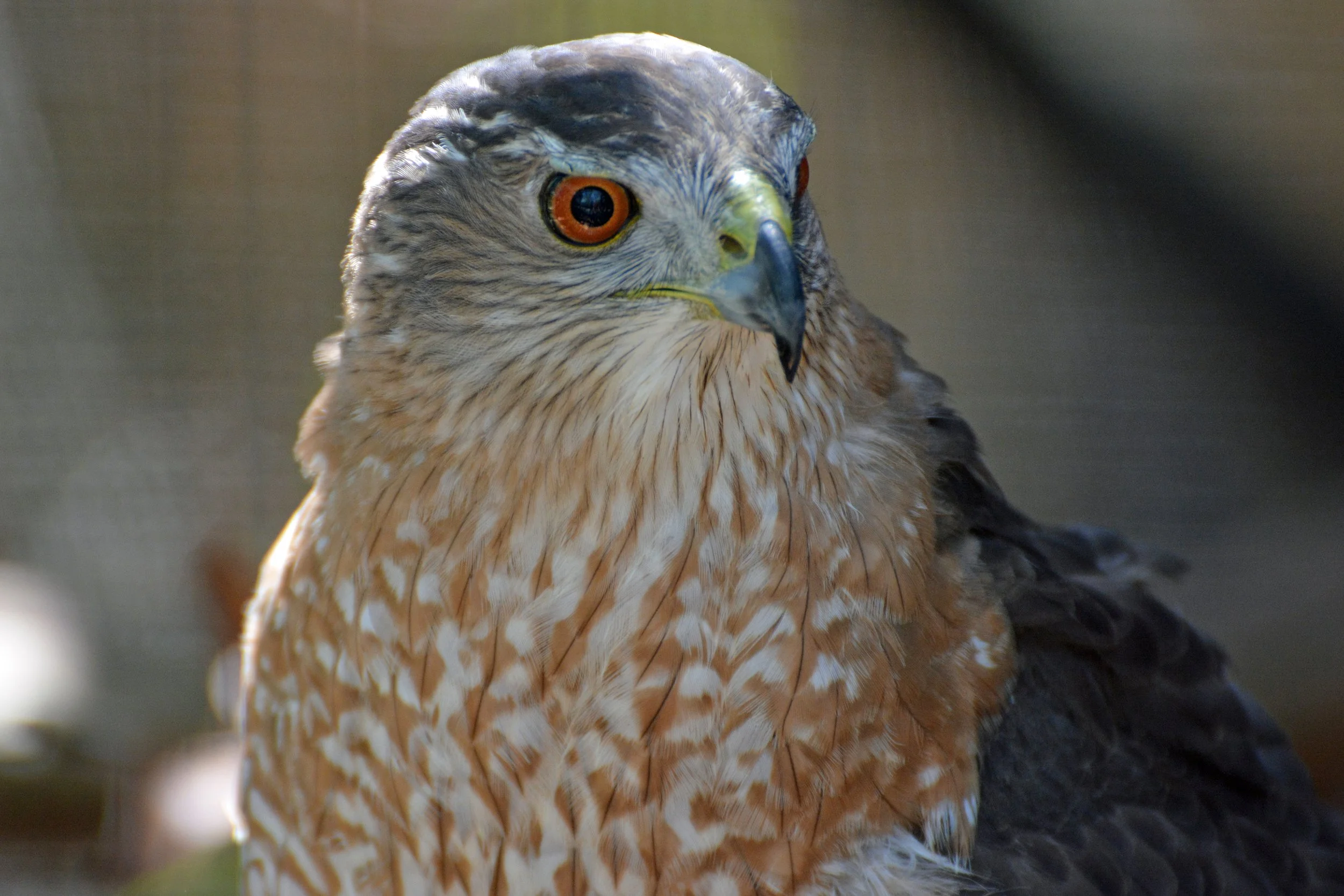The Cooper’s Hawk shows up like a baron, ambushing your feeder and neighborhood birds with wingover maneuvers, blistering descents, and pure pursuits. Whenever I see this bird it seems to be in a flash as it darts by in close quarters; or, in the apparent aftermath of a pursuit, it sits on a perch looking wide-eyed and stunned, unable to comprehend how its quarry escaped.
Typically, savanna and suburban areas are good for seeing perching Cooper’s Hawks. At Faville Grove, there’s been a Cooper’s Hawk darting around Prairie Lane. I’ve seen it maybe ten times in the last month, and I don’t think I’ve seen it beat its wings once.
At top speed Cooper’s Hawks can reach around 50mph—or about the speed of a downhill skier—even more impressive considering the hawks’ preference for hunting crowded woodlands and savannas. You might wonder if they ever botch their deft maneuvers, like an unfortunate skier slaloming through the woods might. In a study, nearly one-quarter of the hawks’ skeletons examined showed healed-over fractures, likely indicating mid-air collisions. I’m sure the songbirds being pursued were thankful for the trees.
An adult Cooper’s Hawk with a dark “cap,” red eye, and rounded-off tail tip (photo by Lesley Haven).
Population numbers crashed through the DDT years, but the bird has made a strong comeback in Wisconsin and now nests across the state with remarkable density in urban areas. Nests are most often constructed in trees, about two-thirds of the way up. Cooper’s Hawks are secretive during nesting, so it can be challenging to locate breeding pairs. A couple of years ago, a local birder found a breeding pair at Hope Lake Bog, in the white oak savanna, which surprised me and the interns since we’d spent a lot of time there both pulling invasive weeds and birding.
You might confuse the Cooper’s Hawk with its close relative and fellow accipiter, the Sharp-shinned Hawk. On the Cooper’s, look for a dark gray “cap” on the head, a normal proportioned neck, and a rounded-off tail tip; Sharp-shinned Hawks have more of a dark gray “hood” that goes down the neck, a stubby neck, and a more squared-off tail tip.
Written by Drew Harry, Faville Grove Sanctuary land steward
Cover image: An adult Cooper’s Hawk with streaked reddish feathers on the chest, a gray cap, and red eyes (photo by Peter Miller).





